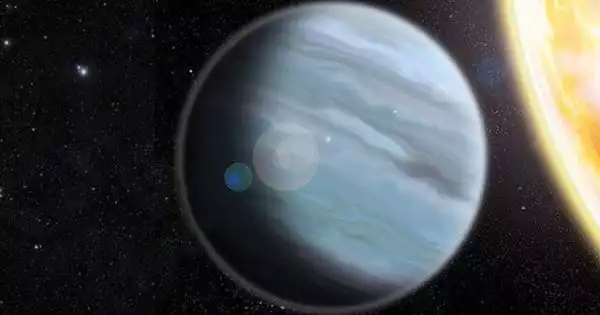PSR B1620−26 is a binary star system located 3,800 parsecs (12,400 light-years) away in the Messier 4 globular cluster (M4, NGC 6121) in the constellation Scorpius. The stellar companion’s color and magnitude indicate that it is an undermassive white dwarf (0.34 ± 0.04 solar mass) with an age of 480 106 ±140 × 106 years. A pulsar (PSR B162026 A) and a white dwarf star (WD B1620−26) or PSR B1620−26 B make up the system. As of 2000, an exoplanet has been confirmed to orbit the two stars in the system.
History
The double system (triple with the substellar companion) is located just outside the globular cluster’s core. The cluster’s age has been estimated to be around 12.2 billion years. As a result, this is the estimated age of the planet’s and two stars’ birth.
A minor disagreement exists regarding the proper nomenclature rules to use for this unusual star system. The A/B convention for naming binary stars takes precedence, so the pulsar is PSR B1620−26 A, the white dwarf companion is PSR B1620−26 B, and the planet is PSR B1620−26 c.
According to the other side, PSR only applies to pulsars and not their companions, so the white dwarf should be named using the WD convention, making the pulsar PSR B1620-26, the white dwarf “WD J1623-266,” and the planet “PSR B1620-26 b.” The first convention was used in early articles, but the second has been used in star catalogs. The most recent proposal uses a nomenclature similar to PSR B1620-26 (AB)b, with capital letters A and B in parentheses to identify the inner stellar components of a binary system, followed by italic letter b to refer to the outer planetary companion. In practice, the context makes it clear whether the pulsar, the white dwarf, the planet, or the system as a whole is being referred to.

Planetary system
PSR B1620−26 b was originally detected through the Doppler shifts its orbit induces on signals from the star it orbits (in this case, changes in the apparent pulsation period of the pulsar).
In the early 1990s, a group of astronomers led by Donald Backer determined that a third object was required to explain the observed Doppler shifts while studying what they thought was a binary pulsar. Within a few years, the planet’s gravitational effects on the orbits of the pulsar and white dwarf had been measured, yielding an estimate of the mass of the third object, which was too small to be a star. Stephen Thorsett and his colleagues announced in 1993 that they had concluded that the third object was a planet.
















